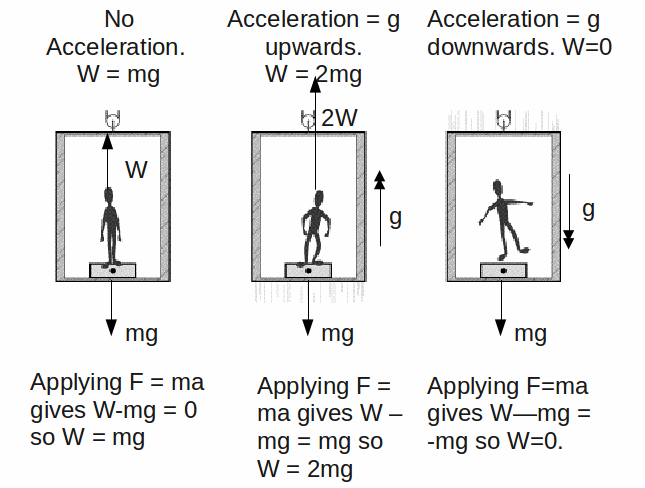One way of defining the weight of an object is to say that the weight is the value of the force recorded on a supporting scale. If the scales were set up in a lift, the value they record would depend on the magnitude an direction of the acceleration of the lift. A man in the lift would feel his weight as the reaction of the lift on his feet. If there is no acceleration, he experiences his normal weight (below left).

If the lift accelerates upwards with acceleration![]() he experiences his weight doubling (above centre).
he experiences his weight doubling (above centre).
If the cable holding the lift breaks, ignoring air resistance, the lift and the man in it would accelerate down with an acceleration of![]() The man experiences zero weight.
The man experiences zero weight.
A person in free fall accelerates down with an acceleration of![]() The person would feel the floor accelerating away from him and feel no force from the floor on his feet. He would be weightless inside the lift.
The person would feel the floor accelerating away from him and feel no force from the floor on his feet. He would be weightless inside the lift.
Astronauts inside spacecraft orbiting the Earth experience weightlessness. Spacecraft and astronaut are in free fall together. In the space station, the gravitational pull on the astronaut provides the centripetal force needed to keep the astronaut in orbit. This force causes the astronaut to accelerate towards the Earth. His motion perpendicular to this acceleration keeps him in orbit. The same is true for the spacecraft. The force between the astronaut and spacecraft is very close to zero, so theresult is weightlessness.
